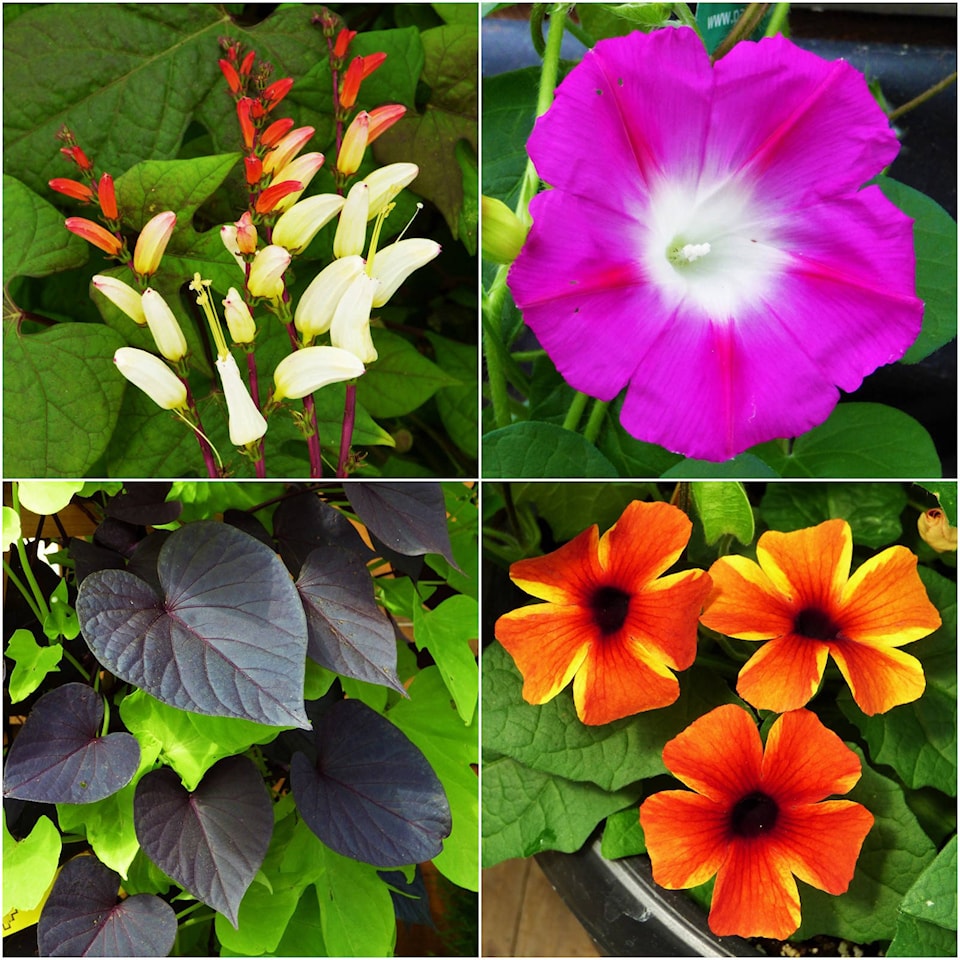When people come shopping for vines at the garden centre where I work, I always like to start the process with a few questions.
How much light do you receive? What is going to support the vine structure (arbor, trellis, fence or wall)? Is it going to be planted in-ground or in container? Why do you feel you need a vine in the first place?
And while available light and support will definitely dictate which vines are most suitable, it is those last two points that determine whether or not I guide the customer towards hardy perennial vines or those of an annual nature.
Growing hardy vines in containers, particularly smaller ones, has many drawbacks – most of which don’t become apparent until they mature a few years later.
The biggest problem is a restricted root space, which will deter overall growth and make the plant susceptible to drought damage as there will always be an unbalance between roots and crown.
This becomes obvious at maturity, when the vines begin to scorch on the leaf margin in the heat of summer no matter how much you may water - essentially meaning that you’ve gone to all this bother for a garden display that is never going to be aesthetically pleasing.
That last question I ask almost always has something to do with wanting the vine to provide some privacy, usually in summer, when we are out enjoying our patio and deck spaces, or soaking in the hot tub. Unfortunately, many of our outdoor leisure areas are already developed to the point where there is little or no ground space, so we are stuck with container growing as our only option.
This is where I direct people towards annual vines – fast-growing summer flowers that quickly provide a visual screen, most of which also give us beautiful flower displays or brightly coloured foliage and they can do it in a manner of weeks, not years.
The other upside is their temporary nature, meaning that will thrive and continue to look aesthetically pleasing despite being grown in a container right up until a hard frost, so that you have the outdoor entertaining season covered.
Here are four species for you to choose from, and while it might be a bit late to start these from small plants, I’m sure that your local garden centre may have a few larger specimens on hand.
• Black-eyed Susan vine (Thunbergia alata) – an old favourite with 1” wide blooms of orange, yellow, red or white, each accented with a distinct dark centre. These are borne in abundance with no need to deadhead, with the vine reaching average heights of 8’. Look for the new variegated Proven Winner varieties like ‘Tangerine Slice A-Peel’.
• Climbing sweet potato vine (Ipomoea batatas) – a new self-climbing sweet potato vine with the same burgundy-black and chartreuse foliage that we appreciate in the trailing forms. ‘SolarTower Lime’ and ‘Black’ also look great trained onto an obelisk in a large container. Height to 7’.
• Spanish Flag (Ipomoea lobata) – fast growing to 8’ tall with interesting compound flowers that emerge deep red and fade to yellow and cream, giving a lovely multicoloured effect. Do not use too much high nitrogen on this plant as you only encourage foliage, with few flowers.
• Morning Glory (Ipomoea purpurea) – these are not those pesky white morning glory weeds (Convolvulus arvensis) that you may be struggling with, but a range of annual vines with flowers of brilliant jewel tones and even a night blooming white form called Moonflower (Ipomoea alba).
Mike Lascelle is a local nursery manager and gardening author (hebe_acer@hotmail.com).
